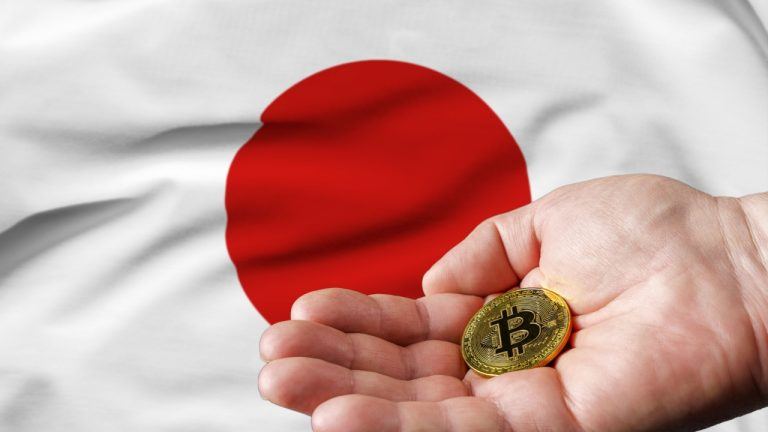Announcing Coinbase Fact Check: Decentralizing truth in the age of misinformation
Every tech company should go direct to their audience, and become a media company.
As Coinbase and the cryptoeconomy grow, we’ve seen more interest from the media, government, and the general public in our business and in crypto overall. This increased awareness has been great. Unfortunately, we also see misinformation published frequently as well, whether in traditional media, social media, or by public figures.
This doesn’t always come from negative intentions. Our business, and crypto, can be difficult to understand, and often people are rushed to post first impressions online, making mistakes in the process. At other times, misinformation comes from people pushing their own agenda, or from those who have a conflict of interest.
This is not unique to our business or industry of course. Every company experiences this to some degree, and it can be incredibly frustrating.
So how should companies respond to misinformation?
The choices
Option 1: turn the other cheek
The most common advice you’ll hear from PR firms and boards is to work behind the scenes to correct misinformation, but never engage in public fights. This might mean working with journalists to fact check a story, or to send internal emails to employees when misinformation is spreading on social media.
Pejoratively, one could call this the pacifist’s approach. Yes, you’re taking regular beatings from a bully, but don’t fight back. Just focus on building a great product and helping the industry grow, and everything will work out in the long run.
On the surface, this approach makes a lot of sense. Why pick a fight with someone who buys ink by the barrel, or with internet trolls who have too much time on their hands. After all, most of your customers probably never see the misinformation, and it can just draw more attention to respond publicly. Companies should never lose focus on the primary objective: building great products.
On the other hand, it can be very damaging to a company’s brand to let misinformation spread unchecked, and working through third parties to share your side of the story rarely is effective. You might, at best, get a short quote in a narrative that someone else controls.
If you look at companies like Facebook, they suffered enormous brand damage when traditional media coverage of them went south (although their business metrics seem to be unaffected). Accurate or not, traditional media has a conflict of interest when covering this topic, as they are in the process of being disrupted by tech. Yet to a large degree, Facebook turned the other cheek and didn’t respond or point out this conflict.
Option 2: fight
The opposite end of the spectrum is to actively fight back. Any time someone posts false information about your company, it’s war. Come out swinging and never back down.
This is a legitimate strategy that some companies have engaged in. Amazon’s recent responses to Andrew Yang or Elizabeth Warren are in this direction, along with FedEx’s CEO aggressively pushing back on a story they found inaccurate. And Peter Thiel’s takedown of Gawker may be the canonical example.
The advantage of this approach is that you are standing up for yourself. The downside is that warfare can be time-consuming, taking your energy away from building. You need to be prepared to go all the way, and it needs to be in line with your brand. There is an old quote which says “never wrestle with a pig, you both get dirty and the pig likes it”.
Option 3: publish the truth
I believe there is a reasonable middle ground between these first two options, which is to simply publish the truth, in a thoughtful and respectful way, and build a direct relationship with your audience. Companies no longer need to go through biased intermediaries to communicate with their customers and stakeholders. They often have equal or greater reach via their blog, podcast, or YouTube channel. In many cases, the only organization that knows what really happened is the company itself.
Tesla is a great example of this middle ground approach, in their Most Peculiar Test Drive blog post. Other examples include Apple debunking the claims of a cover piece or our own post correcting facts in the New York Times. These examples take a reasonable middle ground of trying to just share the facts.
This “fact check” approach is not about antagonizing or embarrassing others, but simply sharing what happened through your own channels. It also means sharing the good along with the bad, with radical transparency. Companies are often reticent to share negative facts, in their inherent desire to look good, and therefore also have a conflict. To become a source of truth, companies will increasingly need to be comfortable sharing facts which paint them in a negative light as well. There is nothing like sharing mistakes, to build trust.
Every company is becoming a media company
Traditional media has been a powerful source of accountability for centuries. In more recent years, social media has as well, as any individual can share what is actually happening. The power of both these institutions is staggering, and they serve an important function. But traditional media and social media each come with a healthy dose of misinformation, and I believe people’s trust in these institutions has been in decline in recent years.
Companies are now emerging as a third source of truth, and can create accountability when misinformation is spread via other channels.
Amazon and Netflix built their own studios, Hubspot acquired the Hustle, a16z is going direct, Stripe has Stripe Press, and many more tech companies are quickly ascending the stack from mere “content marketing” to full-on media arms, complete with editors-in-chief and original content. As Balaji Srinivasan points out, this is the mirror image of legacy media corporations hiring engineers and declaring their aspiration to become world-class tech companies. There is no distinction anymore between app, distribution, and content — everyone is going full stack.
What we’re launching
Today we’re announcing a section of our blog called “Fact Check”. We will use this section of the blog to combat misinformation and mischaracterizations about Coinbase or crypto being shared in the world.
We’re seeding the Fact Check section of our blog with these articles:
- A response to misinformation about the effect bitcoin mining has on the environment
- Some social media misinformation that spread on our executive share sales
- An old post did we rebutting misinformation in traditional media on an employee matter
- A more recent post we did correcting false statements by folks in government and industry about illicit activity in crypto
Currently, these fact checks have been more reactive, responding to misinformation in the news as it happens. However as we build this out, we will get more proactive in helping dispel myths in the crypto space in order to be a powerful source for people just coming in and learning about the cryptoeconomy.
We will continue to update this section of our site over time and when new misinformation appears that is materially incorrect and being distributed broadly.
Here are a few guidelines we’ve created for ourselves in publishing Fact Check articles:
- Be respectful, don’t antagonize.
- Assume ignorance over malice, unless proven otherwise.
- Share our mistakes just as candidly as our successes.
- Don’t respond to everything.
- Don’t get distracted from the main goal: building great products.
There is too much misinformation in the world for us to respond to everything. A lack of us posting should not be considered an indication that an external statement is true. We will only tackle misinformation that reaches some materiality threshold.
The future
In the future, we will need to move beyond fact checking, and start creating more of our own original content to communicate with our audience, and tell the stories of crypto that are happening all over the world. Many of these stories are not being told by traditional media. Fact checking is still largely reactive, but we need to move to a more proactive stance on content creation to have a true media arm.
Distribution of our content will happen through podcasts, YouTube, our blog, Twitter, and every other channel we own. But in the future, it will also likely move to more crypto native platforms, like Bitclout, or crypto oracles. Long term, the real source of truth will be what can be found on-chain, with a cryptographic signature attached.
Conclusion
Many readers have probably experienced the Gell-Mann amnesia effect: you read an article about something where you have first-hand knowledge, find it to be half true at best, and then turn the page to the next post/article and resume assuming it must be true. It takes this happening a number of times to change one’s estimates of what they are reading on every topic.
Crypto is a rapidly emerging space with growing attention and focus on it right now. Unfortunately, with this attention comes a lot of misinformation that is damaging, not only for companies like Coinbase, but for the space broadly. We want to do our best to ensure that when a customer, a regulator, or another important stakeholder is doing their research on crypto that they’re seeing information that is accurate and objective.
Over time, my prediction is that more and more companies will go direct, building their own media arm, while remaining focused on their primary goal of building great products. The tools for distribution have become democratized, and every company can become a source of truth.
Announcing Coinbase Fact Check: Decentralizing truth in the age of misinformation was originally published in The Coinbase Blog on Medium, where people are continuing the conversation by highlighting and responding to this story.
Go to Source
Author: Brian Armstrong









